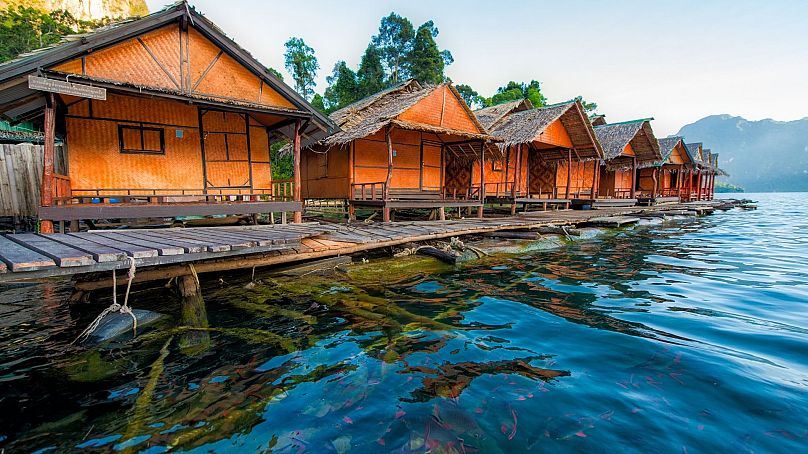The concept was provoked by recent extreme flooding in Vietnam.
A revolutionary concept for a flood resistant ‘floating house’ has been designed by students in the UK.
The idea is that the house would float whenever a flood approaches and shelter people for at least six weeks during catastrophic weather. It could be used as storage for food, water, medicine and sanitation products and is developed to enhance disaster resilience within local communities.
The design has won a place in the top six in the international HUMLOG Global Disaster Preparedness Competition.
It was provoked by recent extreme flooding in Vietnam. According to the United Nations Office for Disaster Risk Reduction (UNDRR), globally nearly 70 million people are endangered by floods each year.
Vietnam is one of the most disaster-prone countries in the world. Due to a 3440km coastline and a diverse and complex topography, the country experiences numerous natural hazards.
“Due to the seasonal floods that occur every year and which cause many people to leave their flood-hit and damaged houses and evacuate to a higher ground, our team generated an innovative solution,” says lead student on the project Duc Toan Nguyen.
How does the house float?
The house is attached to four anchoring steel pilings which fix the structure in one place. Multiple recycled plastic barrels are then tied underneath the ground floor, and the walls and roof are constructed using galvanised metal sheets.
So in the event of a flood, the plastic barrels would give the house a raft-like capability to float above the rising waters.
Duc explains that designing the house “enlightened us with a new concept of humanitarian logistics - but also enabled our entrepreneurial skills to generate innovative solutions for those in need”.
“Most importantly, there is no architect required as the design is straightforward, easy to follow, and manageable for experienced workers,” he goes on.
What were some other climate solutions on offer?
The team from Coventry Business School, led by Duc Toan Nguyen, Oluwadamilola Gbuyiro, Jesse David Mamodu, and Pauline Nalumango, entered the concept in the HUMLOG Challenge Global Disaster Preparedness Competition alongside some of the world’s top business schools. Their rivals included MIT’s Sloan School of Management and Australia’s Queensland University of Technology.
“Although our team did not win, the competition has significantly enhanced our teamwork skills, which is very important for our future careers,” adds Duc.
Colorado State University Business School took the first prize, worth $5,000 (€4,435), for their solution addressing local community involvement on mitigation and response for climate-induced disasters in Mozambique. The solution was a ‘resilience kit’ which worked with people on the ground who struggled to access food after extreme weather events.
The kit helped provide them with crop seeds, hermetically sealed food bags and crucially - an evacuation manual in the event of a natural disaster.













